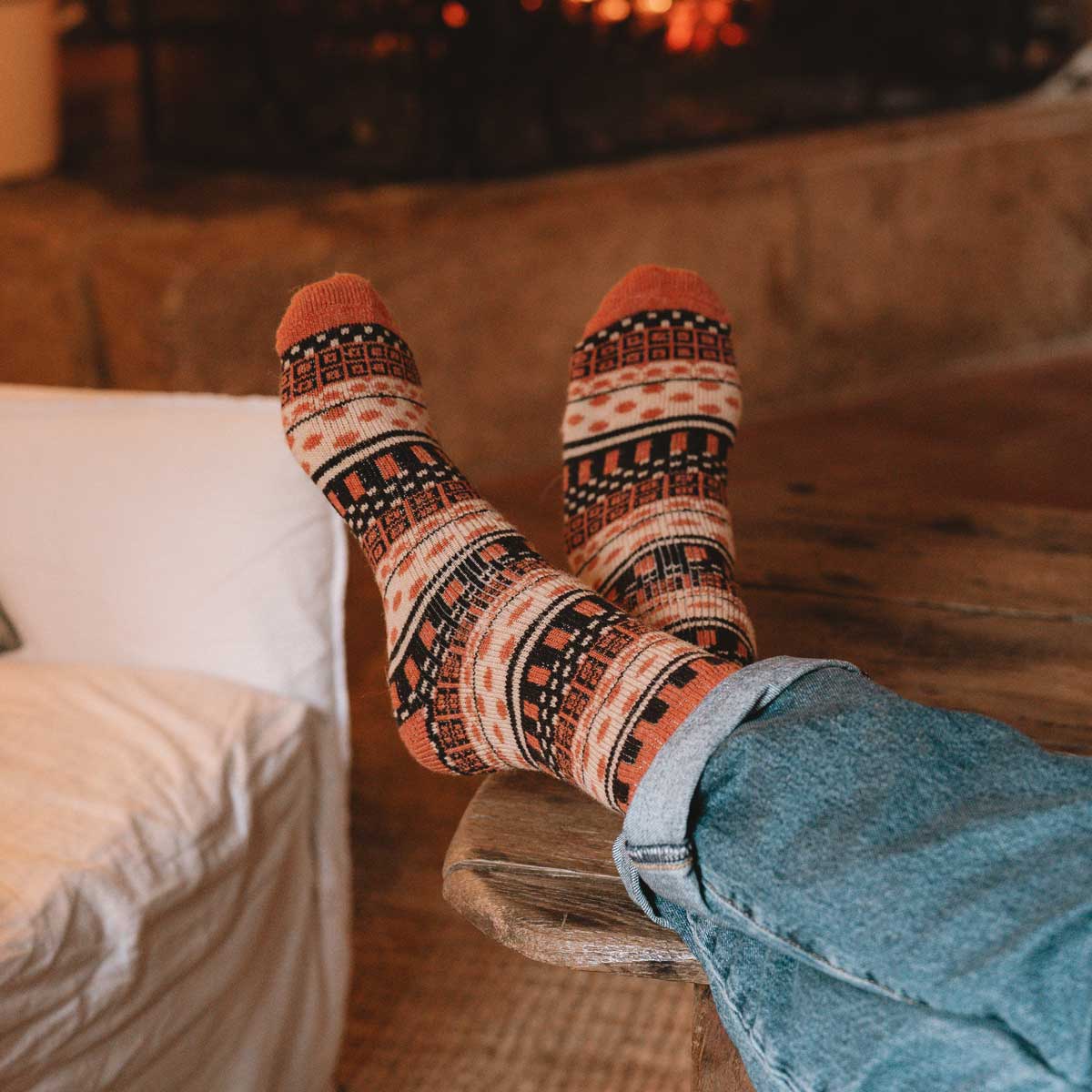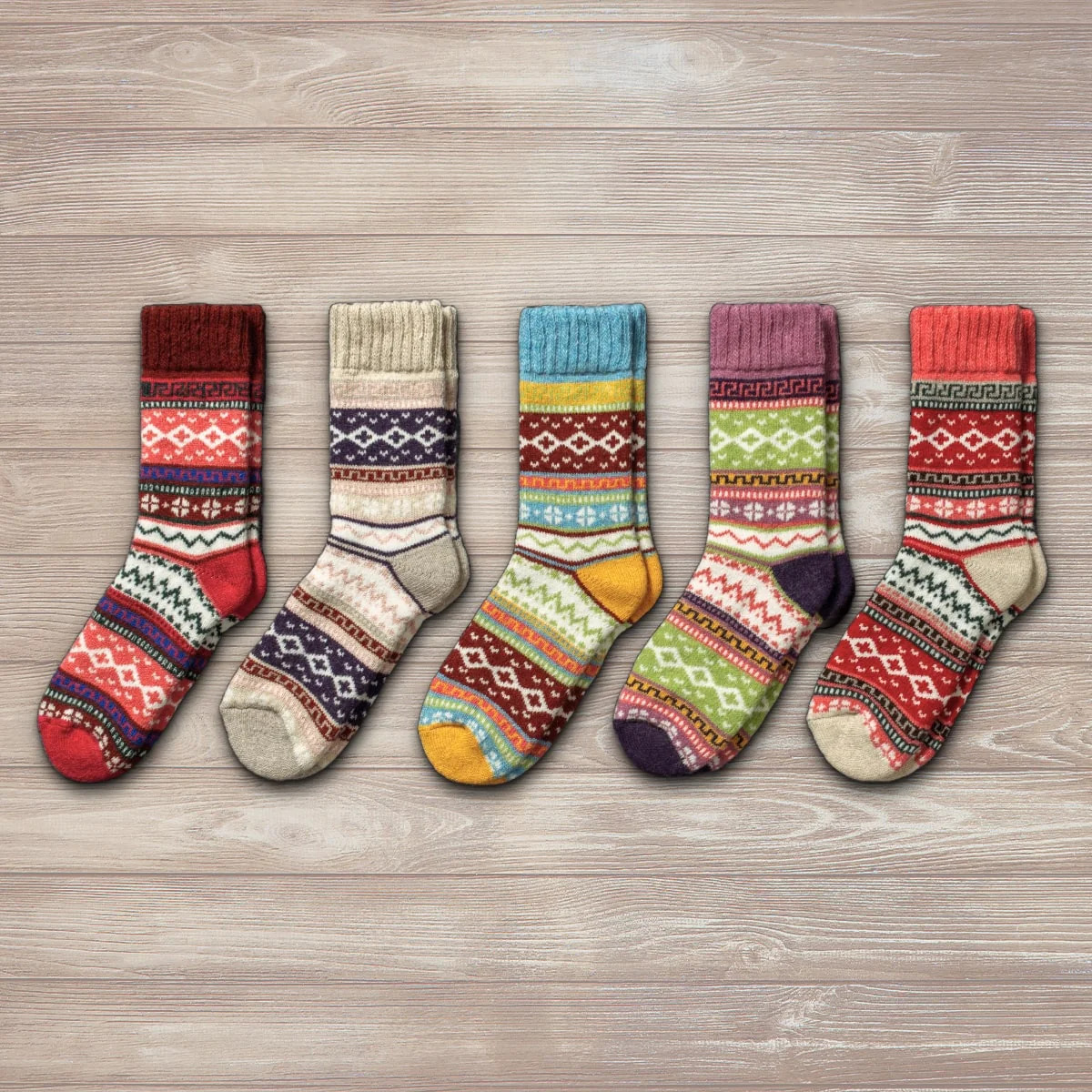When winter arrives, outdoor enthusiasts face the challenge of keeping their feet warm, dry, and comfortable during cold-weather activities. Whether you’re hiking, skiing, snowboarding, or simply enjoying a winter walk, the right socks can make all the difference. Choosing the perfect pair involves more than just picking the thickest or warmest option; it requires understanding materials, fit, and specific activity needs. We’ll guide you through everything you need to know to choose the right socks for outdoor winter activities, helping you stay comfortable and protected all season long. We’ll also highlight how Nordic Socks offers excellent options tailored for winter socks conditions.
Understanding the Importance of Proper Winter Socks
Feet are often the first to feel the cold during winter activities, and cold feet can quickly ruin your experience outdoors. Proper winter socks provide insulation, moisture management, and cushioning, which are essential for maintaining warmth and preventing blisters or frostbite. Wearing the wrong socks like thin cotton ones can trap moisture, reduce warmth, and cause discomfort. On the other hand, a well-chosen sock supports foot health by regulating temperature and keeping feet dry, even during intense activity.

Key Factors When Choosing Socks for Winter Activities
Material Matters: Wool, Synthetic, or Blends
Material is the foundation of effective winter socks. The most popular and reliable material is merino wool, known for its exceptional warmth and moisture-wicking properties. Merino wool traps heat while allowing sweat to escape, keeping feet dry and comfortable. Synthetic materials such as polyester and nylon are often blended with wool to enhance durability and elasticity. These blends provide better fit and long-lasting wear, which is vital for active outdoor use. Cotton socks should generally be avoided in winter since cotton retains moisture and loses insulating ability when wet.
Thickness and Cushioning
Winter socks come in various thicknesses, ranging from lightweight to heavy cushioning. The right thickness depends on your activity and the type of footwear. For high-intensity activities like cross-country skiing or running, lightweight or medium thickness socks are preferable to avoid overheating and to fit comfortably inside snug boots. For less intense or stationary activities, heavier cushioned socks provide added insulation and comfort. Nordic Socks offers a range of options catering to these diverse needs, ensuring warmth without bulk.
Fit and Compression
Proper fit is critical to avoid blisters and discomfort. Socks that are too tight can restrict circulation and cause cold feet, while loose socks can bunch and cause friction. Look for socks with a good amount of elasticity and targeted compression zones, especially around the arch and ankle. This provides support and keeps the sock securely in place during movement.
Moisture Management and Breathability
Outdoor winter activities often involve sweating despite the cold temperatures. Socks that wick moisture away from your skin help prevent cold feet and blisters. Merino wool and technical synthetic blends excel in this area by absorbing sweat and releasing it to the outside of the sock, where it evaporates. Breathable socks with mesh ventilation zones also help regulate temperature and improve comfort.
Durability and Reinforcement
Winter outdoor socks must withstand rigorous use. Look for socks reinforced in high-wear areas like heels and toes. This reinforcement prevents holes and extends the life of the socks. Nordic Socks use durable yarns and reinforced stitching to ensure their winter socks last through multiple seasons of heavy outdoor use.
Choosing Socks Based on Your Winter Activity
Hiking and Trekking
For hiking in cold conditions, your socks should provide cushioning to absorb impact and reduce fatigue. Medium-thick merino wool blends with extra padding on the sole and heel are ideal. Look for socks with moisture-wicking properties to keep feet dry during long treks.

Skiing and Snowboarding
Ski boots are often tight and insulated, so socks need to be thin enough to avoid pressure points but still warm. Lightweight or medium thickness merino wool socks with a snug fit and good elasticity work best. Extra cushioning on the shin area can also help prevent irritation from boots.
Running and Cross-Country Skiing
High-movement activities require socks that balance warmth with breathability and sweat management. Lightweight wool-synthetic blends with mesh ventilation zones are excellent choices to avoid overheating and maintain comfort.
Casual Outdoor Activities
For walking, snowshoeing, or everyday winter use, you can opt for thicker cushioned socks that prioritize warmth and softness. Look for socks with a relaxed fit and plush cushioning.
Why Choose Nordic Socks for Your Winter Adventures?
Nordic Socks specialize in high-performance winter socks designed with the outdoor enthusiast in mind. Their products combine premium merino wool with advanced synthetic fibers, providing the perfect balance of warmth, moisture management, and durability.
Some standout features of Nordic Socks include:
-
Superior Insulation: Their merino wool blends keep your feet warm without overheating, making them ideal for various winter activities.
-
Moisture Control: Advanced fibers wick sweat efficiently, preventing cold, damp feet even during intense exercise.
-
Durable Construction: Reinforced heels and toes ensure longevity, even with heavy use.
-
Comfortable Fit: Elastic arch support and seamless toe designs minimize friction and enhance comfort.
With a wide selection suitable for hiking, skiing, running, and casual wear, Nordic Socks provides reliable winter protection for every outdoor need.
Caring for Your Winter Socks to Maximize Lifespan
To keep your winter socks performing their best, proper care is essential. Always follow the manufacturer’s washing instructions. Typically, washing in cold water with mild detergent and air drying preserves the fibers and elasticity. Avoid using fabric softeners or bleach, as they can damage the wool and reduce moisture-wicking abilities. Proper care ensures that your Nordic Socks remain warm, comfortable, and durable for many seasons.

Conclusion
Choosing the right socks for outdoor winter activities is vital for comfort, warmth, and foot health. Understanding the importance of materials, fit, cushioning, and moisture management helps you make informed decisions tailored to your activity level and footwear. When looking for high-quality, reliable winter socks, Nordic Socks stands out with their premium merino wool blends, durability, and thoughtful design. Investing in the right socks not only enhances your outdoor experience but also protects your feet against the harsh elements of winter.
FAQs
What material is best for winter socks?
The best materials for winter socks are merino wool and synthetic blends. Merino wool provides excellent insulation and moisture-wicking properties, keeping your feet warm and dry even during intense physical activity. Synthetic blends, like nylon and polyester, offer additional durability and elasticity for a better fit.
How do I know if my winter socks fit properly?
Winter socks should fit snugly without being tight. They should not cause any bunching or sliding inside your boots. A good fit will provide targeted compression around the arch and ankle for support while leaving enough room for natural movement. Always check for any pinching or tightness that might restrict circulation.
Can I wear regular socks for winter activities?
It’s not recommended to wear regular socks for winter activities. Cotton socks, for example, retain moisture and lose insulating ability when wet, leading to cold, uncomfortable feet. For outdoor winter activities, you need socks made from materials like merino wool or synthetic blends that wick moisture and provide warmth.
How do I care for my winter socks to make them last?
To extend the lifespan of your winter socks, wash them in cold water with a mild detergent and avoid fabric softeners. Air dry them instead of using a dryer to preserve the fibers and elasticity. Always follow the care instructions on the label for the best results.
Are thick socks better for winter activities?
Thick socks can provide extra warmth, but they are not always the best option for active winter activities. For high-intensity movements, such as skiing or running, thinner socks with good moisture-wicking properties and a snug fit are preferable. For less intense outdoor activities, thicker socks with additional cushioning may be ideal for added warmth and comfort.



